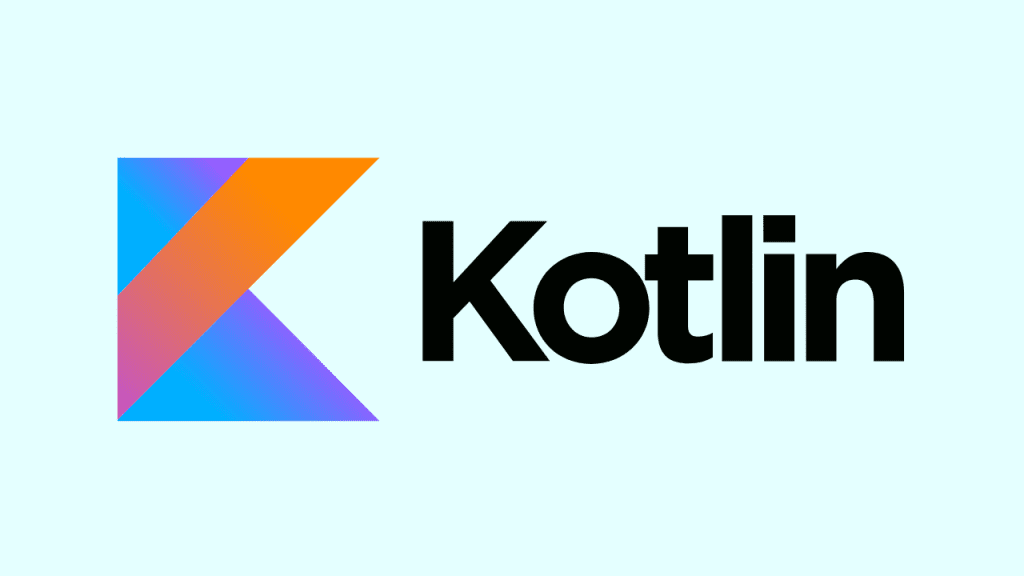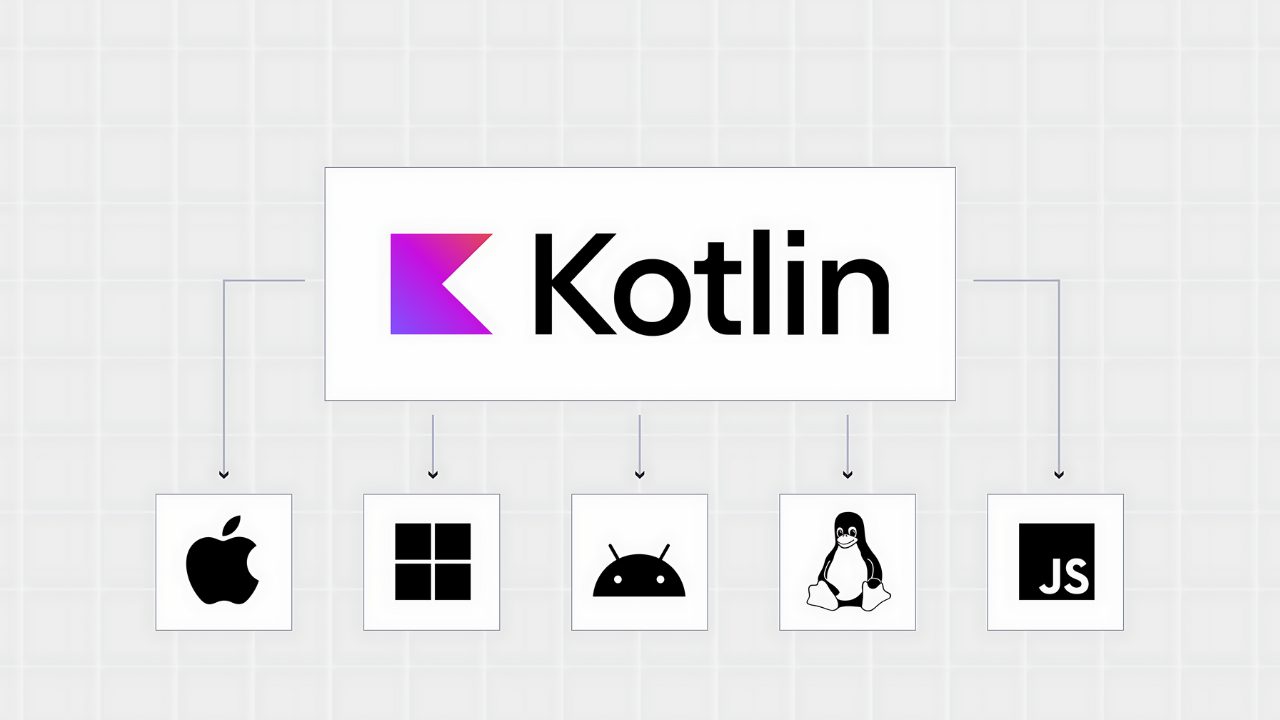Look who’s decided they want to hop on the Kotlin train. You android devs finally realize Java is so last decade and Kotlin is the hip new kid in town. Don’t worry, we’ll get you up to speed on all the basics you’ll need to make the switch. From variables to functions and everything in between, by the time we’re done here, you’ll be writing Kotlin like you were born to it.
And just think – soon you’ll be one of those unbearably smug developers who gets to brag to all their Java-writing friends about how much better Kotlin is. What a treat! Alright, enough chit-chat – let’s get started. The faster we get through this, the faster we become insufferable.
Why Learn Kotlin for Android Development?

Why learn yet another programming language when you’ve just mastered Java? Because Kotlin is simply better. Unlike Java, Kotlin won’t make you want to pull your hair out or question your career choices.
Less Verbose
Kotlin cuts out the verbosity of Java. No more endless getter and setter methods – just write var name = “John” and you’ve got a property with getter and setter. Constructors are concise too, with the primary constructor going in the class header.
Null Safety
No more NullPointerExceptions! Kotlin helps avoid pesky NPEs at runtime with its null safety features. Variables are non-null by default, and you have to explicitly mark them as nullable. Smart casts also help avoid NPEs by automatically casting nullable types to non-null after null checks.
Functional Programming
Feeling overwhelmed by Java’s clunky functional interfaces? Kotlin has first-class support for functional constructs like lambdas, higher-order functions, and immutability. Writing functional style code in Kotlin is concise and pleasant.
Interoperability
The best part is that Kotlin works seamlessly with your existing Java code and libraries. You can call Kotlin from Java and Java from Kotlin, so migrating your codebase is easy.
Kotlin takes the pain out of programming while keeping the power of Java. If you’re an Android developer, learning Kotlin is a no-brainer. With Google’s official support and an awesome set of features, Kotlin makes Android development not just bearable but downright enjoyable.
Kotlin Basics: Syntax, Variables, Functions

So you want to learn Kotlin, eh? Brace yourself for a wild ride through a pragmatic wonderland of semi-colons and curly brackets. Kotlin’s syntax will seem familiar to Java developers but with some sensible improvements.
Read More : Learn C++ Programming From Scratch : Full Roadmap & Example
Say Hello to Semicolon-Free Coding
For starters, you can ditch those pesky semicolons at the end of each line. Kotlin knows when your statement ends, so you’re free to code semicolon-free. Ah, sweet freedom!
Variables: Dynamic Typing with Style
Declare variables with var for multiples or val for immutables. Kotlin infers the type, so you can focus on what matters, like choosing a hilariously quirky variable name.
Functions: Concise and Compact
Kotlin functions are concise, often consisting of a single expression. The return type is inferred, so you can omit it. For compactness, use default arguments and named parameters. Functions are first-class citizens, so you can store them in variables and pass them around. Welcome to Functional Paradise!
Kotlin has a few tricks up its sleeve to make your life as an Android developer infinitely easier. Its pragmatic and concise style lets you focus on what matters – crafting a user experience as smooth as a fresh cup of IntelliJ IDEA-brewed coffee. So pour yourself a cup, open up Android Studio, and get ready for Kotlin!
Kotlin Control Flow: Conditionals, Loops
Alright, listen up Kotlin newbies – it’s time to make some decisions and go in circles. Conditionals and loops are how we control the flow of logic in our programs. Without them, our apps would be about as interactive as a pet rock.
If/Else
The if/else statement lets us run code only when a condition is met. If not, Kotlin shrugs and says “guess I’ll just skip that then!” For example:
if (age > 17) {
println("You can vote!")
} else {
println("Sorry, you're not old enough.")
}
When
For the overachievers out there, Kotlin offers the “when” expression which is like a souped-up switch statement. It checks a value against multiple possible matches and executes the code for the first match. For example:
when (age) {
0, 1 -> println("Still in diapers, I see!")
in 13..17 -> println("Rebel without a cause, eh?")
else -> println("You're all grown up!")
}
Loops
While loops repeat a block of code until a condition is met. Do/while loops are the same but the block runs at least once. For loops are for iterating over collections like lists. I’ll spare you the examples – you’ve seen loops before!
Kotlin’s control flow tools may look familiar, but under the hood, they’re slicker and more powerful than what you’re used to. Master them and you’ll be writing logic like a pro in no time. But be careful with those loops – it’s easy to get caught in an infinite one! (Sorry, couldn’t resist a loop pun.)
Kotlin OOP Concepts: Classes, Objects, Inheritance
Alright, listen up all you Java junkies. Kotlin’s coming for your OOP crown and it’s packing some serious heat. Kotlin classes are lean, mean coding machines that’ll make your Java classes look like bloated dinosaurs.
Say goodbye to all that getter and setter nonsense — Kotlin classes have built-in properties so you can access attributes like lastName simply as user.lastName. And for the love of all that is concise, chuck your constructors! Kotlin has primary constructors that look like regular parameters in the class definition.
Kotlin also has this concept of “companion objects” — essentially static methods and properties without the static keyword. So you can call Math.PI as simply PI. Forget your Math classes, Kotlin’s coming for them too!
And inheritance? Kotlin’s got you covered with a single colon (:). Want to make a Mammal class inherit from Animal? Just put class Mammal: Animal() and you’re done. None of that extends business.
So in summary, Kotlin is bringing OOP into the 21st century with classes that are clearer, more concise, and less cluttered than what you’re used to. If you’re still stuck in the world of Java OOP, it’s time to get with the program people! The future is here, and its name is Kotlin.
Working With Collections in Kotlin
So, you’ve learned the basics of Kotlin and now you’re ready to start storing collections of data, eh? Well, aren’t you ambitious? Slow down there, buckaroo—you’ve got a ways to go before you’re manipulating collections with the best of ‘em.
Kotlin offers a variety of collection types to suit your every data-storing whim. Want an ordered list? They’ve got you covered with List. Need something you can access by key? Try Map. How about a set to store unique values? Yep, they have Set too. Kotlin’s got more collection types than a hoarder’s attic.
Before you dive into the different types, you’ll want to get familiar with some basic terms. Mutable means the collection can be changed after creation, while immutable means it can’t be changed. Generic means the collection can hold any type of element. Kotlin uses generics a lot, so get cozy with the lingo, buddy.
So you’re ready to start collecting some data, eh? Well hold your horses, we’ve only just begun! There are many more collection types to cover, like ArrayList, HashMap, HashSet—the list goes on and on. And we haven’t even talked about iterators, lambda expressions, or inline functions yet.
Learning collections in Kotlin is a journey, not a destination. But don’t worry, you’ll get there. Stay focused, keep practicing, and soon you’ll be manipulating collections with the best of ‘em.
But for now, take a deep breath, and let’s start from the beginning. Kotlin’s collections are powerful, but with great power comes great responsibility. So take your time, learn them well, and you’ll be writing clean, concise Kotlin code in no time.
Kotlin Functional Programming Features

So you wanna get in on this whole Kotlin craze and build an Android app, eh? Well, before you dive into making the next viral social network or brain-training game, you should probably learn a thing or two about Kotlin’s functional programming features.
Lambda expressions
Kotlin supports lambda expressions, also known as closures. These little beauties let you pass blocks of code as arguments to methods. Pretty handy! You’ll use lambdas all the time for event handling, async tasks, and more.
Higher-order functions
Kotlin has a ton of built-in higher-order functions like map(), filter(), and reduce() that operate on collections. These functions take other functions like lambdas as arguments to extend their behavior. Groovy!
Lazy evaluation
Feeling lazy? Kotlin’s got you covered with lazy delegates. These let you defer the initialization of an object until its value is needed. Your code will seem eager to please but really be as lazy as a sloth on a Sunday morning.
Type-safe builders
Kotlin provides the tools you need to implement type-safe builders using lambda expressions and method calls. Builders are a clean, declarative way to construct complex objects step-by-step. You can make your own or use the built-in html {} builder to construct web pages.
And more!
Kotlin is packed with other functional goodies like currying, member extensions, inline functions, and reified type parameters. If Java is a bicycle, Kotlin is a jet-propelled rocket ship to FP paradise!
Learning Kotlin’s functional capabilities is crucial for any aspiring Android dev. Once you master the fun(ctional) -damentals, you’ll be cranking out killer Android apps and wondering how you ever coded without this wondrous language. Happy Kotlin-ing!
Read More : Learn React JS for Free: Complete React Roadmap in 2024
Null Safety & Exception Handling in Kotlin
Kotlin improves on Java’s checked exceptions and null safety. Rather than throwing NullPointerExceptions left and right, Kotlin handles nullability at compile time. Variables are non-null by default, and you have to explicitly mark them as nullable by adding a ?. This helps avoid those dreaded NPEs at runtime.
No more NullPointerExceptions!
In Java, you get a NullPointerException when you try to call a method on a null object. In Kotlin, the compiler won’t even let you compile code that could throw an NPE. If a variable could be null, you have to check for nullability or use safe call operators before accessing its properties or methods.
The Elvis Operator ?:
The Elvis operator ?: is used to return a non-null value when a nullable expression is null. For example: val name = person?.name ?: "Unknown" This will return the name property if a person is not null, or “Unknown” if a person is null.
Safe Calls ?.
The safe call operator? allows you to call methods and access properties on potentially null objects in a safe manner. For example: person?.name This will return the name property if a person is not null, or null if a person is null. No more NullPointerExceptions!
Catching Exceptions
In Kotlin, exceptions are unchecked, meaning the compiler won’t force you to catch exceptions. However, you can still catch exceptions using try/catch:
try {
// do something that may throw an exception
} catch (e: SomeException) {
// handle exception
}
Kotlin’s exception handling improves on Java’s with its “sealed classes” and “exceptions as expressions”. But we’ll save that for another time! Suffice it to say Kotlin makes exception handling more flexible and concise.
Between its null safety features and improved exception handling, Kotlin helps you write safer code with fewer bugs. Your NullPointerExceptions and runtime exceptions will become a thing of the past!
Interoperability Between Kotlin & Java
So you’ve finally decided to hop on the Kotlin train, have you? Welcome aboard, you trendy little developer! Kotlin’s been waiting for ya. Now that you’re here, it’s time to explore one of Kotlin’s biggest perks: seamless interoperability with Java.

Kotlin was designed with Java in mind, so the two languages play together like old pals. Kotlin code can call Java code, and Java code can call Kotlin code, with no fuss or hassle. This means you don’t have to ditch all your precious Java code to start writing in Kotlin. Kotlin’s got your back, and it will hold your Java’s hand all the way to the playground.
When you call Java code from Kotlin, you don’t even have to do anything special. Just call that Java method like you own the place! Kotlin will handle converting the data types for you automatically. How courteous! Calling Kotlin from Java requires a bit of annotation, but nothing too terrifying. Just slap a @JvmOverloads annotation on your Kotlin method, and Java can call it like any other method.
Want to use a Java library in your Kotlin project? Go right ahead! The Kotlin gods have blessed us with the import keyword, so you can import any Java package and start using it immediately. And of course, because Kotlin produces Java-compatible bytecode, you can call Kotlin code from any Java library as well.
The moral of the story? Kotlin and Java are BFFs, and they want you to join in on the fun. Kotlin will welcome you with open arms, no matter how much Java code you bring along for the ride. So dive right in, you trendy little developer, and start calling some Java methods from Kotlin today!
Learn Kotlin for Free: Best Tutorials & Online Courses
So you want to learn Kotlin, do you? Well, aren’t you just the trendiest little Android developer? Kotlin is the hip new language on the block, and all the cool kids are learning it.
Video Credit : freeCodeCamp.org
Before you dive in, know that Kotlin isn’t for the faint of heart. It’s a real programming language, not some Fisher-Price “My First Code” situation. You’ll need to learn keywords, syntax, and logic. But don’t worry, with a little dedication (and caffeine), you’ll be writing Kotlin like a pro in no time.
The best way to learn Kotlin is through hands-on practice. Check out tutorials from Udacity, Udemy or Coursera. They offer interactive courses where you can code along with the instructor. Hearing explanations while writing real Kotlin code yourself will make the concepts stick in your memory. These courses cover Kotlin basics like data types, control flows, and object-oriented programming.
Once you get the hang of it, start building your own basic Android apps in Kotlin. Creating a “Hello World!” app, a basic calculator, or a simple game are great ways to reinforce what you’ve learned. Don’t get discouraged if you get stuck. Building apps takes practice. Check the documentation, search online, or ask fellow developers for help.
If you prefer to learn through reading, there are free ebooks on Kotlin as well. But be warned, coding is a hands-on skill. Reading without practicing is like watching a video on how to swim without ever getting in the pool. You might understand the concepts, but you’ll never actually learn to swim.
The key to mastering Kotlin is diligent practice. But don’t make it a chore. Have fun with it! Build apps you’re excited about, and the knowledge will come naturally. Before you know it, you’ll be dreaming in Kotlin and annoying your friends by pointing out all the Java code that could be converted. Happy learning, and welcome to the world of Kotlin!
Conclusion
So there you have it, you aspiring Android app master. Now you’re fully equipped to kotlin your way to mobile development glory. With the fundamentals of Kotlin under your belt and the roadmap we’ve provided, you’ll be coding circles around those Java joes in no time.
Just remember – with great Kotlin power comes great responsibility. Use your new skills wisely to create apps that enrich people’s lives, not just hypnotize them into infinite scrolling. Now go forth, be great, make proud the Kotlin deities who smile upon you!
Read More : Flutter Developer Roadmap in 2024 : Jobs And Salary Guides
 Oko Dot All In One Technology Solutions By Likhon Hussain
Oko Dot All In One Technology Solutions By Likhon Hussain
